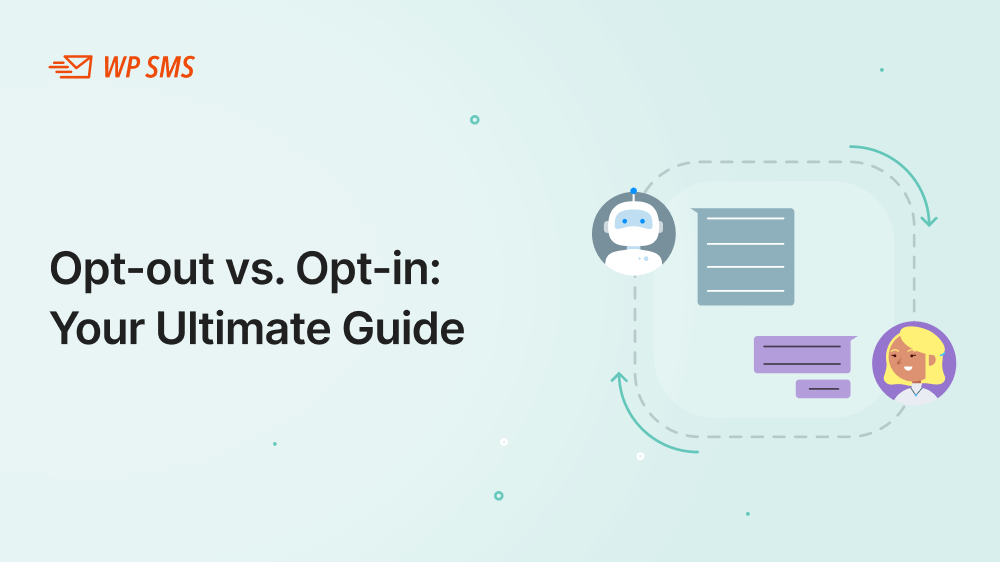Do you know the difference between opt-out vs opt-in marketing approaches?
If you don’t use the best method to increase the number of subscribers, your marketing campaign will fail.
Read the following blog post to learn how opt-in and opt-out marketing methods work and what approach is better for your business.
If you also need more info about SMS marketing, you can always count on WP SMS and contact us any time you want.
Opt-In vs. Opt-Out: Key Differences
The main distinction between opt-in and opt-out marketing is how customers give permission to receive SMS.
Here is a more detailed explanation of the difference between opt-in and opt-out:
1. Opt-In Marketing: What Is It?
Opt-in marketing is any activity that gains the trust of customers and encourages them to consent to receive your messages.
In fact, they have to subscribe to your SMS marketing list, otherwise, you can’t send ads to them.
This is a must in national and international regulations like GDPR and TCPA. If you don’t get opt-in permission, you might face fines.
You have to give some options to your customers to opt-in. For example:
- Submit their phone number using a form on your website
- Send a keyphrase to a shortcode number.
- Check a box or select a preference on a digital sign-up form.
In sum, the key to opt-in marketing is active participation. In other words, your audience willingly joins your SMS marketing list to get updates on your products/services.
Here are several approaches to increase the opt-in rates in your SMS marketing campaign:
- Website Sign-Up Form: You can show a pop-up or a form on your website with this message:
Message
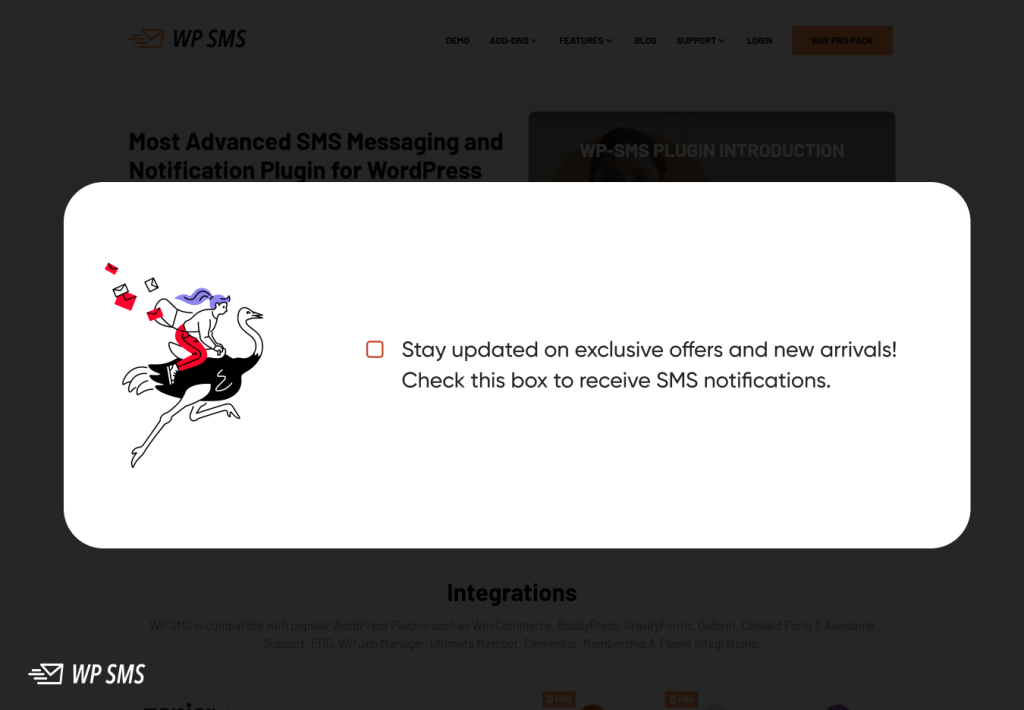
- Email Opt-In: You can promote your SMS campaign via email by sending this email:
Message
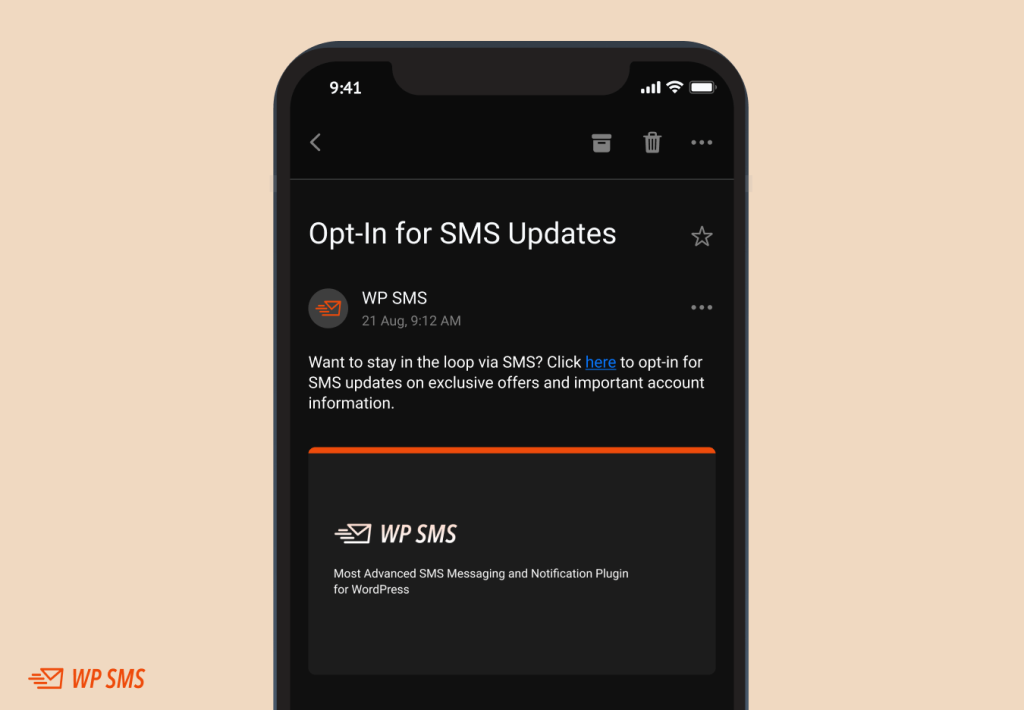
- In-Store Sign-Up with Paper Form: You can encourage your customers to sign up for your SMS campaign in your shop.
- Social Media Call-to-Action: Social media platforms are the best channel to increase opt-in rates.
2. Opt-Out Marketing: What Is It?
The opt-out approach is somehow the opposite of the opt-in one. In opt-out marketing, you consider customers on the subscriber list unless they want to remove themselves from the list.
You have to give them a simple and explicit option to unsubscribe from your SMS marketing list.
In this approach, you have to send bulk SMS messages to a broad audience and include an opt-out option in the text.
This is also part of communication regulations and you have to comply with them if you want to run a legal SMS marketing campaign.
Practically speaking, this approach is easier for your business because you don’t need to get initial consent before sending your messages. However, you must be careful to avoid negative brand experiences from customers overwhelmed by unsolicited messages.
Here are two examples of opt-out options in SMS marketing:
- Example 1: Telecommunications Company Promotion
Message
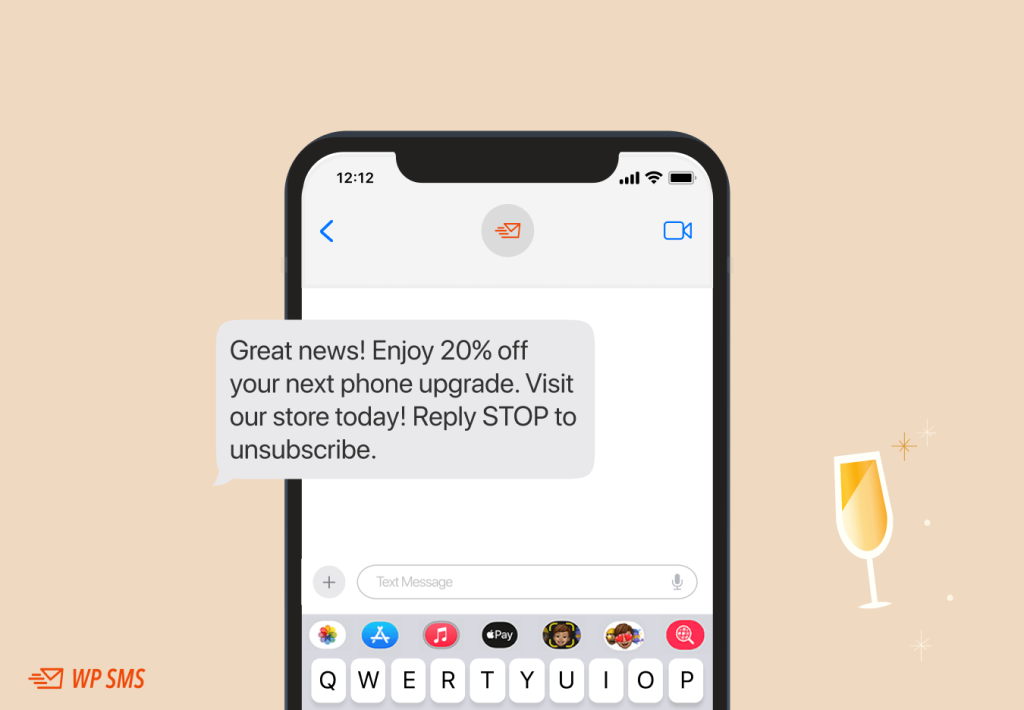
- Example 2: Retail Store Notifications
Message
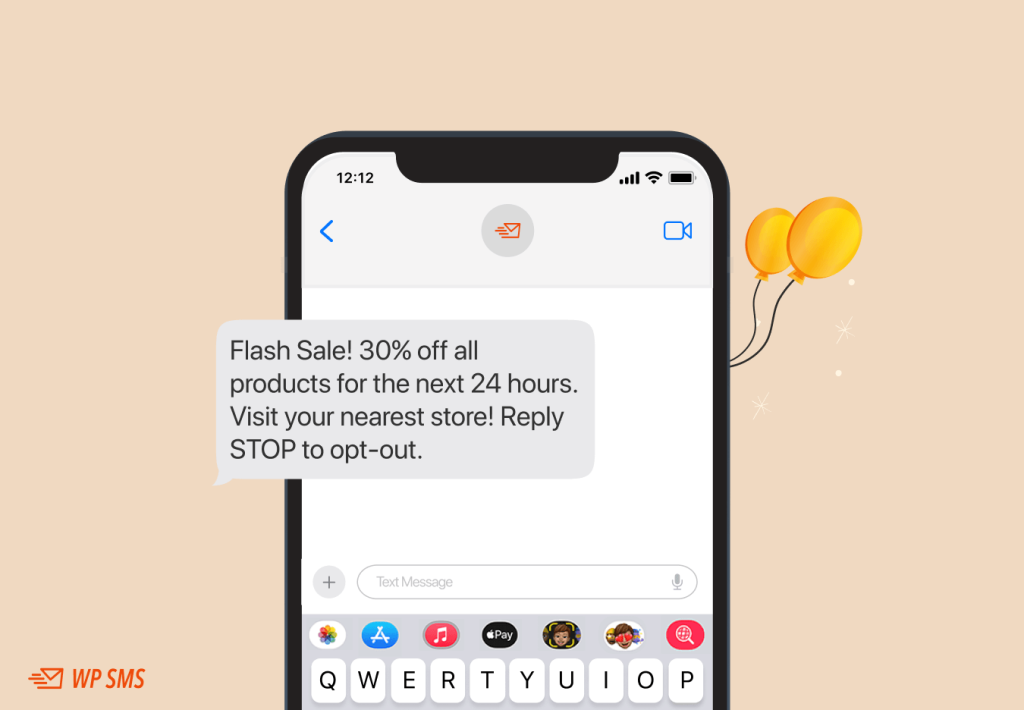
Advantages and Disadvantages of Opt-In SMS Marketing
Here are the pros and cons of opt-in marketing:
Advantages of Opt-In SMS Marketing
- Higher Engagement Rates: In opt-in marketing, your audiences have actively signed up for messages. Therefore, they’re more likely to engage with the content you send. Also, you can expect higher open rates, click-through rates, and conversion rates for your SMS marketing campaigns.
- Compliance with Legal Standards: Opt-in marketing ensures explicit customer consent for SMS marketing. This brings peace of mind for you because no one can charge you because they use their data like phone numbers.
- Stronger Customer Relationships: Opt-in marketing makes customers feel they are in control. In fact, by giving them the choice to sign up, you’re respecting their privacy and preferences. This way, they trust in you and this will increase customer loyalty.
- More Stable Subscriber List: When your recipients show interest in receiving your communications, they probably stay with you in your campaigns. As a result, opt-in campaigns typically have fewer opt-out rates.
Disadvantages of Opt-In SMS Marketing
- Slower List Growth: Compared to opt-out strategies, list growth in opt-in marketing may be slower. It would help if you waited for potential customers to find your opt-in requests and sign up. This is particularly worse for small businesses and startups.
- Requires More Effort in Promotion: To encourage customers to subscribe to your SMS list, you need to advertise your opt-in request on several channels. Sometimes you also need to consider discounts or other offers to boost your subscription.
- Smaller Reach: Even if you promote your opt-in request on all channels and consider big offers for subscribers, still you can’t reach out to all potential customers. Therefore, your circle of reach will be much smaller than opt-out marketing.
Advantages and Disadvantages of Opt-Out SMS Marketing
Just like opt-in marketing, the opt-out approach has some benefits and drawbacks. Here are some of the most important pros and cons of this method:
Advantages of Opt-Out SMS Marketing
- Faster List Growth: In opt-out marketing, you’re sending SMS to all phone numbers you can earn from any channel like website, social media, etc. So you can grow your list of phone numbers really soon.
- Wider Audience Reach: You can earn phone numbers from all channels without initial consent. This will increase your reach and give you the chance to contact a large number of audiences.
- Less Initial Effort: You don’t need to get consent from audiences so the initial effort and money you need to spend is less than that of opt-in marketing.
Disadvantages of Opt-Out SMS Marketing
- Higher Unsubscribe Rates: Many people don’t like to receive ads so your opt-out rates will be much higher than that of opt-in marketing.
- Compliance Risks: Opt-out marketing can pose legal risks. You have to be careful in regions with strict privacy laws because if your campaign doesn’t comply with regulations like the GDPR or TCPA, you could face heavy fines. So try to make sure you have a clear opt-out option in your SMS.
- Lower Engagement: Even if recipients don’t opt out, many of them don’t engage with advertisements. This will reduce your engagement rates.
- Potential Brand Damage: If you send too many SMS in opt-out marketing, your recipients might be annoyed and this will dent your brand reputation.
Opt-Out vs. Opt-In: Best Practices for SMS Marketing
Now that you know the differences between these two approaches, it’s good to learn the best practices to make the most of them:
1. Stay Compliant
No matter if you’re using an opt-in or opt-out strategy, you have to familiarize yourself with the SMS marketing regulations.
This includes the GDPR, TCPA, CAN-SPAM Act, and any other local regulations in your region.
Although an opt-out strategy is easier, try to gain explicit consent whenever possible. This helps you gain the trust of your customers and reach higher engagement rates in your campaigns.
2. Provide Clear Opt-Out Options
Even if you use the opt-in marketing approach, you’d better include the opt-out option in your text messages. When you respect your audience, your brand reputation will increase.
3. Segment Audience & Personalize Your Messages
You need to segment your audience according to data such as customer preferences, previous interactions, or purchase history.
This way, you can create more targeted content for them, increase your engagement rates, and reduce the opt-out rates. Also, try to personalize your message to build a stronger friendship with your recipients.
4. Timing Matters
If you want to reduce your opt-out rates, avoid sending messages during odd hours or when your audience is unlikely to engage.
Although there is no specific rule for the best time for SMS marketing, the following hours have proved to lead to better results:
- Thursday at 2 pm
- Friday at noon
- Saturday at 7 pm
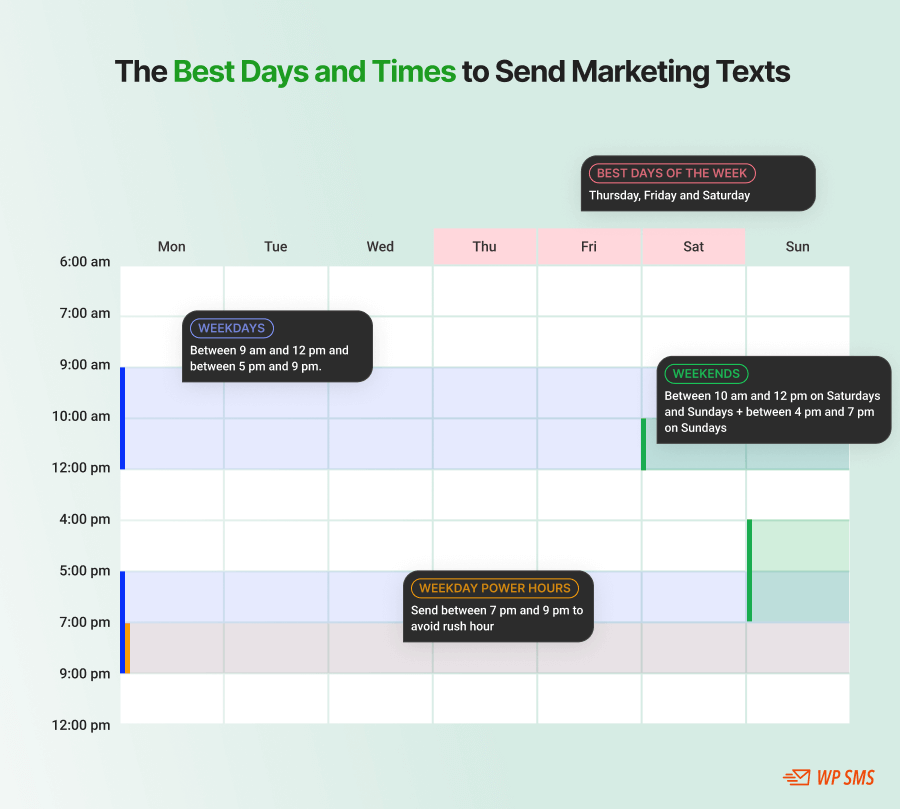
5. Use Incentives to Boost Opt-Ins
As said earlier, you need to offer something in return for a subscription. When customers see they earn something valuable, they are more likely to sign up for your campaign.
Here are some examples of offers to reach higher opt-in rates:
- Discount Offer:
Message
- Exclusive Content:
Message
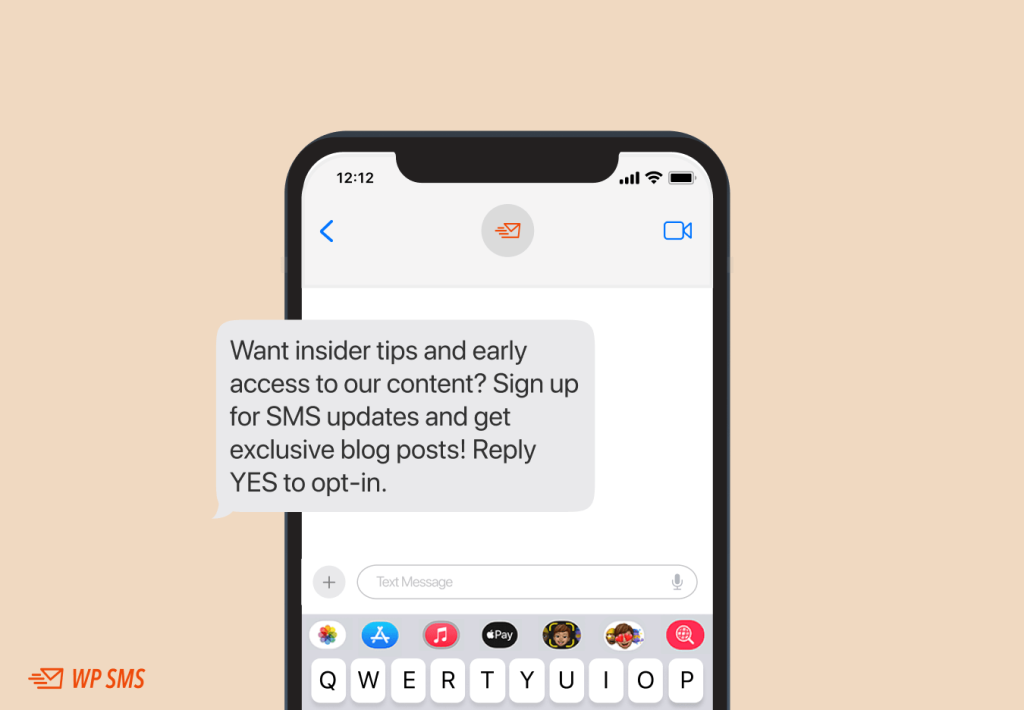
- Free Gift:
Message
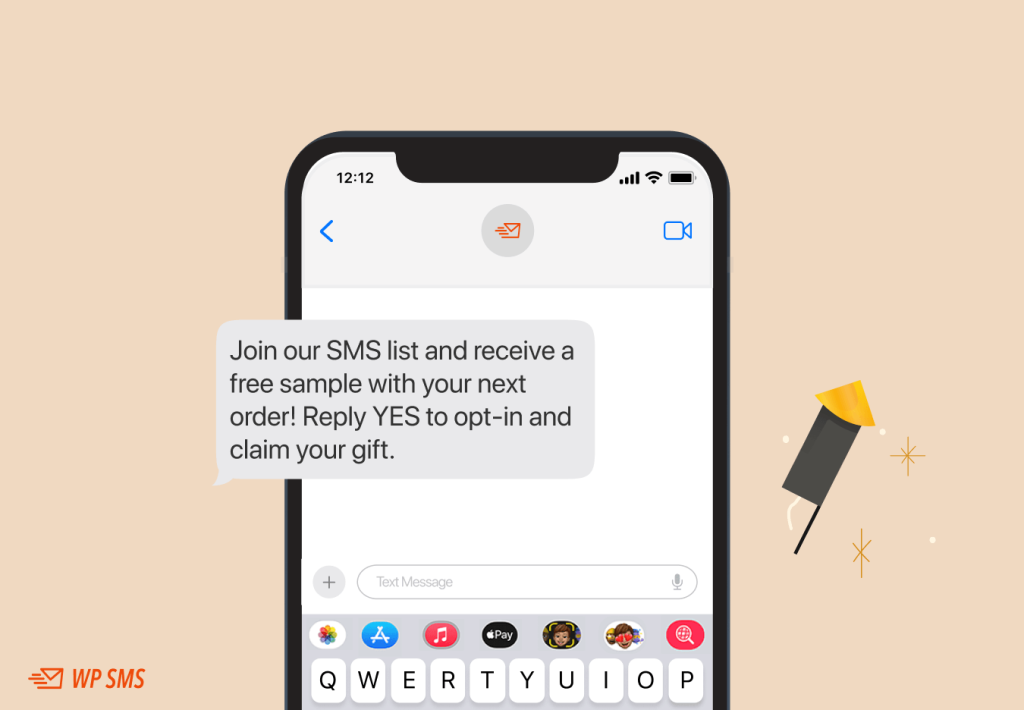
- VIP Access to Sales:
Message
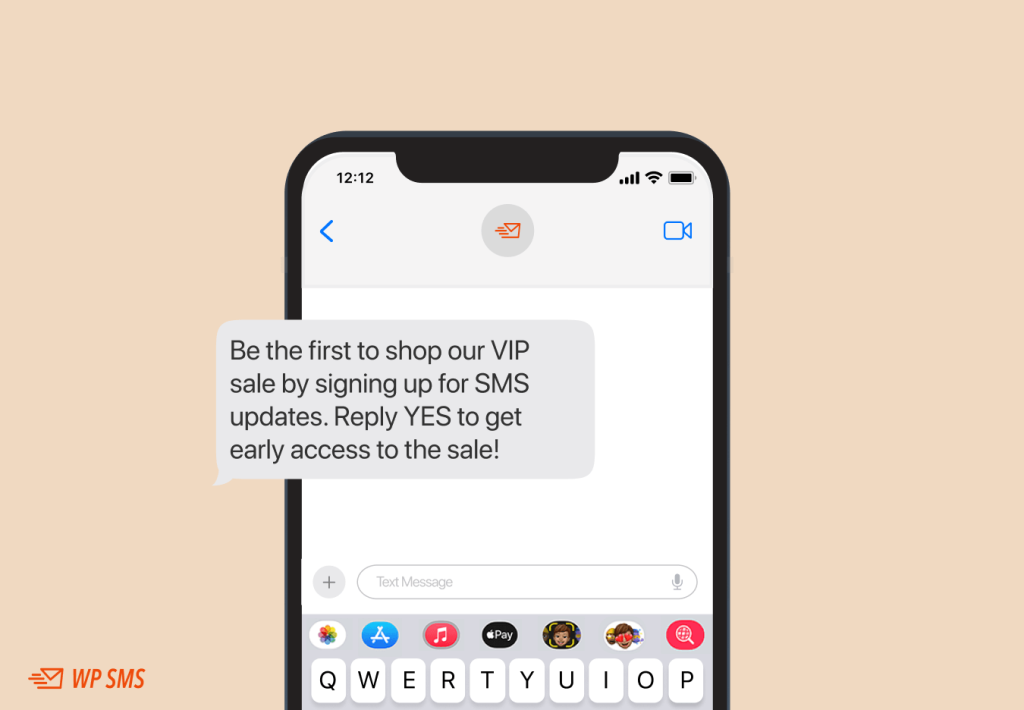
- Contest Entry:
Message
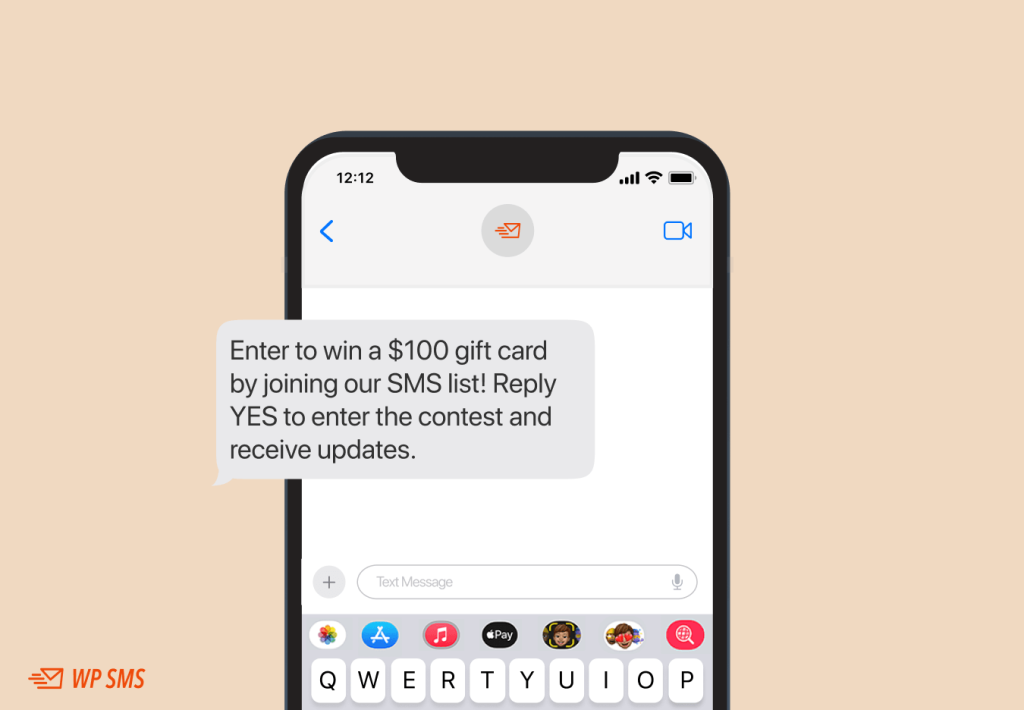
6. Use the Right Tool to Send Bulk SMS
To send bulk messages and get the best result, you have to use the right SMS platform. WP SMS is one of the best SMS plugins for WordPress websites. Using this platform, you can send opt-in SMS to your website’s users.
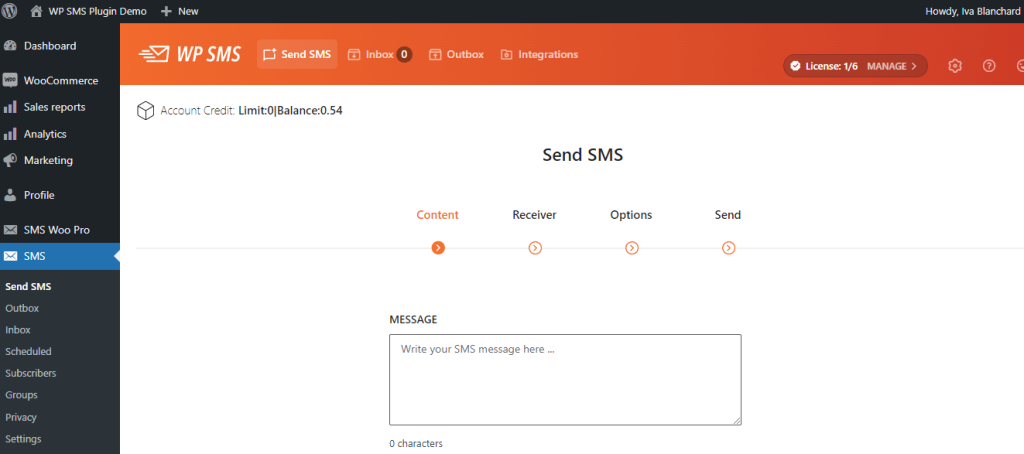
This way, you’ll integrate your SMS marketing with your digital marketing strategies and reduce the cost of your campaigns. Also, it allows you to segment your audience and send personalized text messages to your recipients.
Final Thoughts: Which Is Better for SMS Campaigns in 2025?
Here is a summary of what we said about opt-out vs opt-in SMS marketing:
| Feature | Opt-In SMS Marketing | Opt-Out SMS Marketing |
| Definition | Customers personally give consent to receive SMS | Customers receive SMS unless they unsubscribe |
| Customer Consent | Explicit consent before sending SMS | Assumes consent unless the customer opts out |
| List Growth Speed | Slower list growth | Faster list growth |
| Engagement Rates | Higher engagement | Lower engagement |
| Unsubscribe Rates | Lower unsubscribe rates | Higher unsubscribe rates |
| Compliance with Laws | Fully compliant with regulations like GDPR and TCPA. | Risk of non-compliance with privacy laws |
| Target Audience Size | Smaller audience size due to voluntary sign-ups. | Larger audience as it reaches more people initially. |
| Initial Effort Required | Requires promotion and incentives | Little effort is needed to start |
| Brand Impact | Positive brand perception due to respect for privacy. | Potential for brand damage |
| Best For | Long-term engagement | Quick reach to a large audience |
As you can see, opt-in and opt-out marketing methods both have pros and cons. You must choose the one that best suits your requirements.
For example, if you have a large business, opt-in marketing is best for you because you probably have a website or social channel with lots of users, and therefore, the opt-in rate is high.
On the other hand, if you have a small business or a startup, you’d better start with the opt-out approach.
The reason is that you can’t reach out to many users on your channels due to lower traffic. Remember that you don’t have to push too hard for it.
This might take time and effort to build a list of engaged subscribers. Of course, you’re not alone in this journey. You can always contact us if you need more help from WP SMS.
FAQs
What is the difference between opt-out vs opt-in?
The key difference between opt-in and opt-out is the initial consent. In opt-in marketing, you need clear consent from the user before starting the campaign. On the other hand, opt-out assumes consent until the user unsubscribes.
Is opt-out better than opt-in?
Each of these methods has its pros and cons. Opt-out is better for small businesses because it doesn’t need much time and resources for initial consent. On the other hand, the opt-in method gives customers full control over their data and is more compliant with regulations.
What is an example of opt-in and opt-out?
When you fill out a sign-up form on a website, you’re actually giving your opt-in consent. Also, if you click on the unsubscribe link at the end of a message, you’ll opt out of the marketing list.
